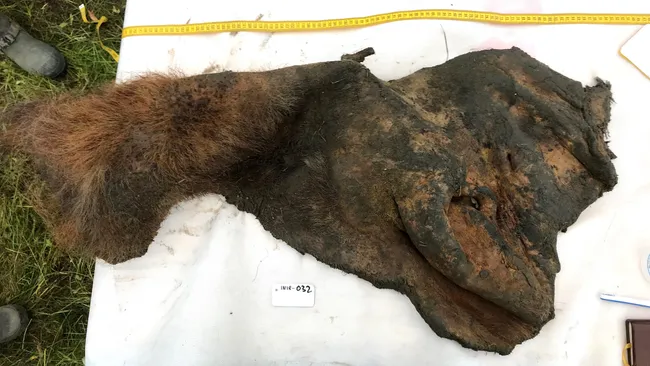In a groundbreaking development for de-extinction efforts, scientists have successfully determined the 3D structure of a woolly mammoth’s genome using a remarkably well-preserved 52,000-year-old carcass. This achievement marks the first time researchers have been able to unravel the complete genetic blueprint of such an ancient creature, overcoming the challenges posed by degraded ancient DNA.
The breakthrough, detailed in a study published in the journal Cell, holds promise for advancing our understanding of genetic differences between modern elephants and their woolly mammoth ancestors. By sequencing the entire genome, scientists aim to identify every DNA mutation distinguishing these species, crucial for ongoing efforts to potentially revive the woolly mammoth.
Juan Antonio Rodríguez, co-author and assistant professor at the University of Copenhagen, likened previous DNA studies to reading disjointed pages of a book without page numbers. Now, with the 3D genome analysis enabled by the High-Throughput Chromosome Conformation Capture Technique (Hi-C), adapted for ancient DNA as PaleoHi-C, researchers can effectively organize these fragments and explore how chromosomes were structured within the mammoth’s skin cells.
The specimen, nicknamed “YakInf,” discovered in Siberia, exhibited exceptional preservation, including intact cells and chromosomes due to a combination of freeze-drying and glass transition processes. This preservation method halted degradation, keeping the mammoth’s genetic material remarkably intact over millennia.
Furthermore, the study revealed that woolly mammoths possessed 28 pairs of chromosomes, mirroring modern elephants. This genetic insight into chromosomal organization provides valuable clues into cellular function and evolutionary traits of these ancient giants.
The findings not only illuminate the genetic makeup of woolly mammoths but also pave the way for potential applications in conservation genetics and evolutionary biology, offering unprecedented insights into prehistoric life and the prospects of resurrecting species from the past.
